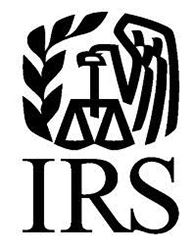07 January 2013
Fiscal Cliff: Simple Explanation of Bush Tax Cuts

Click here to listen to this podcast
In continuing the United States Fiscal Cliff simple explanations, the question on the floor is "What are the specific items that could effect our personal budgets in January 2013 if no tax relief extension measures are taken?" One of those items is the Bush Tax Cuts.
Remembering 2001...
Before I jump too deeply into this, I'd like for you to travel in time with me. Let's go back to January 2001.
The blockbuster movie releases included Mission Impossible II staring Tom Cruise and Gladiator with Russell Crow. Among the music chart toppers were Faith Hill's "Breathe", Donnell Jones with "U Know What's up" and Destiny's Child's "Say My Name" (Take a few minutes to click the links here and enjoy the videos for these 12 year old favorites!!) The national average price for a gallon of gas was $1.46 and the Dow Jones Industrial Average was dipping a bit in comparison to the numbers that we saw in 1999 and 2000. The 'dot.com' boom and other technology frenzy items had been responsible for the soaring stock market in the late nineties but now, January 2001, some of the quick start technology companies were going bankrupt and causing a downward spiral throughout the technology sector.

The Federal Reserve had started a correction for the soaring 'dot.com' economy of the late 1990s by raising the interest rates in the year 2000 which always slows down the economy a bit. Between June 1999 and May 2000 the Fed had increased interest rates six times. Many speculate that this was a key factor in our financial markets being unstable. That "dot.com" bubble burst that was anticipated did take place and as a direct result we saw a crash of the NASDAQ in March 2000. The NASDAQ is the stock market that has a strong technology sector makeup.
Believe it or not, we were in a position to have a federal tax surplus! Our taxes were high and our national debt was low at 5.7 trillion dollars (at the time of this writing, our national debt 16.4 trillion dollars). It was projected that our government would quickly pay off this national debt and end up with more income from taxes than was needed to pay our bills which is a condition that we want to avoid in a not-for-profit entity like our federal government.

We had just elected Texas Governor George W. Bush as our 43rd US President. One of the President's top campaign promises was that there would be a tax reform that would lower taxes for the American people and that was one of the first things that was focused on after he took office on January 20th 2001. As a result of these two pieces of legislation were passed. The Economic Growth and Tax Relief Reconciliation Act of 2001 (EGTRRA) was signed into law on June 7, 2001 and the Jobs and Growth Tax Relief Reconciliation Act of 2003 (JGTRRA) was signed into law on May 28, 2003. These are hardly referenced separately because as you can see when we go further, they are very closely associated. These two pieces of legislation are known as the Bush Tax Cuts. You also hear these referenced as the Bush-era Tax Cuts. Together they comprise a broad sweeping set of tax law changes that meant lower taxes for individuals and businesses within the United States. The initial proposal for the EGTRRA was to permanently implement the these tax law changes but that was met with resistance and speculation that the required number of passing legislative votes would not be reached. It was passed as a Reconciliation act which required it to include a sunset date for many of the included provisions while taking advantage of a lower number of required votes and a limited debate time. The bill passed with a 10 year time of implementation - scheduled to expire on December 31, 2010.
Looking at 2003...
After 2001 our national financial state was a bit more grim. We were still dealing with the bursting of the 'dot.com' bubble, we were hit with the September 11 terrorist attack and feeling the pains of the collapse of major corporations like Enron, MCI Worldcom and Nortel after investigations confirmed unfair accounting practices. The Jobs and Growth Tax Relief Act of 2003 was signed into law to again introduce some tax relief measures to individuals and businesses within the US as a measure to stabilize and improve the state of families and the economy in America.
What's in the Economic Growth and Tax Relief Reconciliation Act of 2001?
What's in the Jobs and Growth Tax Relief Reconciliation Act of 2003?
Did the American Taxpayer Relief Act of 2012 (Fiscal Cliff deal) change any of these legislated items?
Please note that what I share with you here is by no means the complete content of above listed legislative acts - there's a lot of detail there (confusing detail in my opinion). You can get additional information on any of these items by referencing the actual laws online. I've included the links to the federal archives for each of these items at the end of this blog post.
In reference to the EGTRRA, this law introduced significant changes to our Internal Revenue Code. There are many many items in this act. I'll outline them here and will go into more detail of those that are most applicable to most of us. I've noted those with an asterisk.

Outline of the Economic Growth and Tax Relief Reconciliation Act of 2001
*Title I -- Individual Income Tax Rate Reductions
*Title II -- Tax Benefits Related to Children (Child tax credits)
*Title III -- Marriage Penalty Relief
Title IV -- Affordable Education Provisions
Title V -- Estate, Gift and Generation Skipping Transfer Tax Provisions
*Title VI -- Pension and Individual Retirement Arrangement Provisions
*Title VII -- Alternative Minimum Tax (Increase in AMT exemption)
Title VIII -- Other Provisions (miscellaneous item like no income tax for restitution paid to victims of NAZI regime and expansion of authority to postpone tax related deadlines in time of disaster)
Because the Jobs and Growth Tax Relief Reconciliation act of 2003 (JGTRRA) was so closely tied to the EGTRRA 2001 Act, I'll note adjustments introduced in 2003 act in-line with the 2001 explanations.
To avert the tax side of the Fiscal Cliff, the American Taxpayer Relief Act of 2012 (ATRA aka the Fiscal Cliff Deal) was passed on January 1, 2013. Because the provisions of this legislation also references the Bush Tax Cuts, I'll also include the effects of this 2012 Relief Act in these explanations.
A key item about the ATRA (Fiscal Cliff Deal) that is not related to the Bush Tax Cuts: In 2013 all US taxpayers will see less in our paychecks. This is because the ATRA did not extend the 2012 Payroll Tax Holiday. As a result our Old Age, Survivor and Disability Insurance tax rate returned to 6.2%. We had been enjoying a reduced rate of 4.2% as a result of the 2010 Tax Relief Act. We will see this tax increase on our paychecks as an increase in FICA or OASDI effective in January 2013.
Title I - Individual income tax rate reductions - This was a direct reduction in our federal tax obligations. We saw this rate reduction when we completed our annual income tax return each year beginning in the 2001 tax year. For us, when we referenced the tax table as a part of completing our annual returns, the reduced amount of tax we owed for our income level was reflected in those tax tables. These reductions were originally scheduled to be gradually phased in over a period of 6 years, from 2001 to 2006. Here's a chart the shows the reduction percentages and original time schedule:
Economic Growth and Tax Relief Act of 2001
Individual Income Tax Rate Reductions
----- Original Tax Rate ------
Calendar year 28% 31% 36% 39.6%
-----------------------------------------------------------
2001.................. 27.5% 30.5% 35.5% 39.1%
2002 and 2003......... 27.0% 30.0% 35.0% 38.6%
2004 and 2005......... 26.0% 29.0% 34.0% 37.6%
2006 and thereafter... 25.0% 28.0% 33.0% 35.0%
-----------------------------------------------------------
A new 10% tax bracket was created and the 15% tax bracket was modified to be effective for individuals with a higher income than before. Again, the rates were reduced for everyone and there were no actions on our part required to realize these reductions. They were built into the IRS tax tables.
The Jobs and Growth Tax Relief Reconciliation Act of 2003 accelerated us to the scheduled 2006 reduced tax rates in 2003.
The American Taxpayer Relief Act of 2012 (Fiscal Cliff Deal) permanently legislates these lower Bush-era income tax rates for all taxpayers that have a taxable income lower than $400,000 ($450,000 for married taxpayers and $425,000 for head of households). The tax rate for these higher income levels is 39.6%.
Title II - Child Tax Credits - The Child tax credit is a credit that is allowed per qualified dependent child for families that make less than $130k annually. Note that a tax credit is an adjustment to your tax liability that make it look as if you've already paid the tax. This is different than a deduction which makes you look as if you don't owe the tax. The amount of this credit was originally capped at $500 per child. The 2001 Tax Act (EGTRRA) introduced gradual increases to this $500 per child credit to $1,000 per child over the 2001 to 2010 time period.
The Jobs and Growth Tax Relief Reconciliation Act of 2003 ended the phased-in approach and accelerated this tax credit to it's planned $1,000 level in 2003.
This credit is reduced from the $1,000 per child amount for higher income families that have adjusted annual gross incomes that exceed the following guidelines:
$110,000 for Joint filers $75,000 for single filers $55,000 for Married filing separately
The Fiscal Cliff Deal (American Taxpayer Relief Act of 2012) permanently extends the $1,000 child tax credit.

Title III - Marriage Penalty Relief - Before this act was signed into law, the amount of the IRS standard deduction for an individual tax filer was less if that individual was married. This means that if an individual is married, by law they owe more taxes than a single person. To break this down simply, If I'm single and I made $100 of income for the year and the allowable amount of money that is my standard deduction is $5 then my taxable income is $95 and I will owe the IRS tax on this $95. In this same example, if I'm married the allowable amount that I and my spouse can claim as a standard deduction if we file individually is $3 each making our taxable income $97 on that same $100 of income. Both my spouse and I are penalized just for being married. The tax change here was to make the amount of the standard deduction the same for an individual regardless of their tax filing status. If married individuals choose to file jointly, the deduction is two times the amount of the individual deduction so that again, there is no difference in the tax liability whether single or married.
These marriage penalty relief adjustments were originally planned to be phased-in beginning in the year 2005. The 2003 Tax Act, in an effort to stimulate the slowing economy, accelerated these changes to be in full effect that tax year. The Tax Relief Act of 2010 extended these marriage relief adjustments so that they would be in effect through the 2012 tax year. The Fiscal Cliff Deal (American Taxpayer Relief Act of 2012) made this marriage penalty tax relief permanent.
Title IV - Affordable Education Provisions - In the 2001 Tax Relief Act there were many changes and additions made to our taxing structure in the name of affordable education. There's a huge section on this. I'm not going to detail any of these here (this topic could warrant it's own separate blogpost) but if you have a close tie to education (are a student or have children that are students, are a teacher or have plans to set aside funds for the future education needs of your family), take some time to look up the changes that were implemented. Again, these are in effect now.
The Fiscal Cliff Deal extended and made permanent a number of tax incentives designed to promote education. This deal even resumed retired education tax incentives. Again, please take the time to look at the tax codes associated with education to get the specifics.
Title VI - Pension and Individual Retirement Arrangement Provisions - With the 2001 Tax Relief Act, a gradual increase in the amount of allowed contributions to IRA accounts was set to motion. This increased the previous $2,000 maximum contribution amount to a $5,000 maximum contribution amount. This limit increase was scheduled to be implemented gradually over the 2002 to 2008 timespan with $1,000 contribution increases every two years.
There were also many good changes made that improved the handling of retirement funds including making these funds more portable. Because these changes were not temporary and would not be affected as a result of Fiscal Cliff negotiations, I'm not going to focus on these items here.
The Fiscal Cliff Deal further improved retirement savings opportunities. Participants with 401(k) plans that have Roth conversion options can now make conversions to Roth at any time instead of being restricted by age and qualifying life events. While this improves our retirement account flexibility, when converting to a Roth account, the tax is due at the time of conversion thus generating tax revenue. Of course, we can initiate Roth conversions anytime that we'd like to do so... Our government surely does not have a problem with us initiating a tax payment!
Title VII - Alternative Minimum Tax (AMT) - This is a big one. Back in the day the AMT was known as the 'flat tax'. This taxing structure is typically applied to upper middle class households with a large number of deductions. It was designed to prevent large deductions and tax shelters from lowering the tax liability in a way that would enable individuals to legitimately not be liable for what is considered a "reasonable" amount of tax. Here's an example that may make this more simple to understand. Let's say that each tax deduction that you have is a coupon - like the ones in that pouch of coupons that you get in the mail weekly (Your tax deductions include your personal exemption, dependent children, medical expenses, mortgage interest deduction...). You take the coupons with you when you want to buy what is advertised. To prevent you from having so many coupons that you end up getting the item or service for free, your coupon may be limited to only allow a single coupon per visit, it may be invalid when presented with other coupons... etc. What the business that extended the coupon is attempting to do is to prevent you from paying less than what they've deemed as a minimum price for the product or service being sold. If you have a lot of coupons, you will only be allowed to have a discount up to a certain amount - you will have to pay something for the product or service no matter how many coupons you present.
The AMT uses this same logic when it comes to your federal income tax liability. If you have many children, have a high dollar mortgage which gives you a large mortgage interest deduction and you give generously to many charities, without the AMT in place, it could be possible that you'd have a very low or zero tax liability. Taking the AMT into account, the tax that you will pay will be the higher of either your calculated tax with deductions or the AMT or flat tax for your taxable income level. If you fall into the category of having to pay taxes under the AMT guidelines, to calculate your taxable income instead of applying deductions as you would when using the standard IRS tax tables, your adjusted income will be reduced by a single amount called the AMT exemption. The 26% and 28% tax rate is applied to this taxable income. This exemption amount was increased as a part of the 2001 Tax Relief Act (EGTRRA). This higher deduction pushed millions of families outside of the boundaries of having to pay the AMT which is a higher than normal tax rate.
The Fiscal Cliff Deal increased the AMT exemption amount for the year 2012. Allowances for inflation adjustments were implemented for years after 2012. This prevented over 60 million taxpayers from being subject to the AMT for returns that are about to be filed for the 2012 tax year. This is a permanent tax relief item.
We made it to the end! Whew, that's a lot of information! Note that this is one of the five components of the Fiscal Cliff. I challenge you to verify your source of this information (yours truly) and while doing that learn more about the specifics of these financial matters that are real to each of us. Do that by referencing the actual legislation in the Federal Archives and IRS Tax Code supporting documents using the following links:
Economic and Growth Tax Relief Reconciliation Act of 2001
Jobs and Growth Tax Relief Reconciliation Act of 2003
Internal Revenue Code (Tax Code)
American Taxpayer Relief Act of 2012 (Fiscal Cliff Deal)
Stay tuned for information on other Fiscal Cliff topics. Was this helpful in any way? Are there items that were more confusing than helpful? Let me know through your comments.
To post a comment click here.

Carolyn
To read my previous article in this series Click Here
